
Transcription
Part One (Feb 9, 2009) PRISON CROWDING
DOC chief: Safety requires new cells
FOCUS ON INMATES OVERLOOKS EDUCATION NEEDS, FOES SAY
INDIANA PRISONS BY THE NUMBERS
116 Laws enacted by the legislature since 1989 that create new crimes or stiffen penalties.
269.4 Number of prison years those laws added to Indiana's sentencing laws.
7,365 Male maximum-security inmates in DOC custody in 2008.
8,897 Projected male maximum-security population by 2013.
6,186 Maximum-security beds now available.
Source: Indiana Department of Correction
By Mary Beth Schneider
mary.beth.schneider@indystar.com
After serving 12 years of a 20-year sentence for a slew of crimes, including robbery and kidnapping, Kelvin Fuller was moved in 2007 from his maximum-security cell to medium-security confines.
A couple of weeks later, Fuller escaped. He went on a five-day crime spree that included robbing a Fishers bank and attacking and robbing a female bus driver in Merrillville before he was captured in Montana.
To Indiana Department of Correction Commissioner Ed Buss, Fuller is the poster child for why, even though Indiana is cash-strapped in this current economic downturn, the state needs to build additional maximum-security cell blocks at two of its prisons.
Despite double-bunking maximum-security prisoners and even triple-bunking lower-security prisoners, DOC facilities are at 99 percent capacity. With about 7,400 maximum-security prisoners right now and only 6,186 maximum-security beds, Buss fears more Fullers.
GROWTH PROBLEM
The Department of Correction says Indiana's prison population soon will be too large unless beds are added.
[graph showing Adult and Juvenile inmate population and available beds]
Source: Indiana Department of Correction
ANGELA EDWARDS / The Star
"There is no way that he should have been in a medium-security facility," Buss told law-makers in a recent Indiana House Ways and Means Committee hearing.
"However, there wasn't enough beds at the state prison, so you have to take chances... Unfortunately there's conse-
>> See Prison, Page A6
ALMOST FULL: Inmates take a walk at Wabash Valley Correctional Facility, the last maximum-security prison the state built, in 1992.
[image]
CHARLIE NYE / The Star
Prison where I am held I'm in segregation
Part two
Feb 9, 2009
THE INDIANAPOLIS STAR . INDYSTAR.COM
Prison
>> Some blame legislature for laws adding crimes, lengthening times.
From A1
[carrying on from previous page]
quences that come with that."
If lawmakers are only now beginning to understand that, they have only themselves to blame for at least part of the problem.
Since 1989, the legislature has passed 116 laws creating new crimes or stiffening penalties. Each law alone might account for only a couple of more years in prison on any given offense - but they add up. Overall, lawmakers have approved new laws resulting in 250 to 275 years of additional prison time.
"We clearly have a tendency to want to shown that we're strong on law enforcement by passing more crimes and by elevating things to felonies. That's somewhat of a contagious disease around here," said Senate Appropriations Committee Chairman Luke Kenley, R-Noblesville.
Aggravating the problem: The last new prison built in Indiana was in 2001, when Miami Correctional Facility in Bunker Hill in north-central Indiana was expanded by 1,632 medium-security prison, Wabash Valley Correctional Facility near Carlisle in south-western Indiana, was built in 1992.
Debate over priorities
Seeking to address the problem, Gov. Mitch Daniels last month proposed spending $40 million to add 612 beds at Miami and 576 beds at Wabash Valley.
They were the only capital improvement projects in his proposed two-year state budget.
At the same time, Daniels proposed boosting the DOC's budget by $105 million while placing a two-year moratorium on big-dollar university projects, cutting the budget for higher education by an average of 4 percent and essentially flat-lining K-12 education spending.
His proposals set off a debate in the Statehouse over whether the state's spending priorities are out of whack.
It would be difficult to justify an expansion of prison beds at a time when the governor's proposed to sort of flat-line education. It emphasizes incarceration over education," said House Ways and Means Committee Chairman Bill Crawford, D-Indianapolis.
Senate Minority Leader Vi Simpson, D-Ellettsville, said she'd rather see those prison dollars going to education, including Indiana University at Bloomington, which is in her district.
"The budget expresses the state's priorities," Simpson said. "When you're cutting the higher ed budget in order to fund the Department of Correction, that seems like priorities turned upside down."
To Buss, it's a matter of public safety.
Four years ago, he said, male maximum-security inmates made up 22 percent of the DOC population. That's risen to 29 percent, the fastest-growing segment of inmates.
"The department's baseline budget has been flat the last four years, while higher education and other initiatives have gotten priority," Buss said. "So now it's simply time to add capacity to prisons."
Crawford does agree with Buss on one thing: The legislature is partly responsible for the growing prison population.
Larry Landis, executive director of the Indiana Public Defender Council, said he's identified at least 40 bills this session that would add crimes and prison time.
The DOC "doesn't really have a choice" except to ask for more money to house the inmates, he said, but the state also needs to find long-term solutions.
Landis recommends giving judges more discretion in sentencing by not requiring mandatory minimum sentences and giving parole boards the discretion to decide whether an inmate is no longer a threat and can be released.
Terry Baumer, director of criminal justice and public safety programs at the School of Public and Environmental Affairs at Indiana University-Purdue University Indianapolis, also blames the war on drugs for filling up prison space that should be used by violent offenders. About a quarter of those who went to prison last year were sentenced on drug charges, he said.
He noted that the crime rate is going down - from a high of 525.1 violent crimes per 100,000 Hoosiers in 1994 to 333.6 in 2007, according to the Bureau of Justice Statistics - but Indiana's prison population continues to grow by about 4 percent each year.
At a cost of $54.28 per day - or more than $19,000 annually to house and feed an inmate - Indiana needs to find alternatives, Landis said.
"We can't afford this mindless, endless prison construction," he said.
Short-term solutions
Building the new cell blocks at Miami and Wabash Valley already is Plan B for Buss.
He'd hoped to build a $100 million maximum-security prison but scrapped that idea when it became clear that the state couldn't afford it now.
If the legislature doesn't agree to build new cell blocks, Buss will go to Plan C.
"We'll have to make a decision this summer to start triple-bunking (maximum-security prisoners) or closing program areas here at Wabash Valley like the gymnasium, maybe the school, and converting them to housing units," he said as he toured Wabash Valley last week with a reporter.
Triple-bunking maximum-security prisoners, he said, is "unheard of."
"Even California (notorious for prison crowding) doesn't triple-bunk maximum-security offenders," he said.
The thought of adding 50 inmates to cell blocks that already house 100 is alarming to corrections officers and inmates.
"We'll probably have more murders, lots of guys killing each other," predicted Rodney Johnson, 24, Fort Wayne, who is serving a 34-year sentence at Wabash Valley for aggravated battery and criminal recklessness.
James Manuel, a corrections officer at Wabash Valley, said adding inmates would make an already tough job more dangerous.
Though the overall ratio is three employees to one inmate at Wabash Valley, when inmates are in their cellblocks, particularly at night, they outnumber corrections officers 100 to 1.
"You add another 50 bodies on to that," Manuel said, "it'd be crazy."
* Call Star reporter Mary Beth Schneider at (317) 444-2772.
HIGHER EDUCATION
The only capital improvement projects recommended by Gov. Mitch Daniels in his proposed budget were for new prison facilities. Universities, though, also have their wish lists. Some of those projects and the total cost of each:
Indiana University
>>IUPUI Neurosciences Building: $33 million.
>>IU-Bloomington Cyber Infrastructure Office: $35.7 million.
>>IUPUI and IU-Bloomington Life and Health Sciences Lab renovations: $37 million.
>>IU-Bloomington Multidisciplinary Sciences Building: $42.4 million.
>>Five projects on regional campuses: $98.4 million.
>>IU-Bloomington International Studies Building: $47 million.
>>IU-Northwest Tamarack Hall (Destroyed in last year's floods): $33 million.
Purdue University
>>IUPU-Fort Wayne library and classroom renovation: $6 million.
>>Purdue-West Lafayette Life Sciences facility improvements: $60 million.
>>Purdue-Calumet Emerging Technologies Building: $26 million.
Note: Totals for some projects include state and university funds.
Sources: Indiana University and Purdue University.
+ EXPANDED COVERAGE Go to IndyStar.com/politics for the latest on Indiana and national politics, including a Statehouse bill tracker, columns and more.
COPING WITH TOO FEW BEDS
Some steps the Department of Correction has taken to increase its capacity while it waits to make more beds available for maximum-security prisoners:
>>Made space for 2,443 inmates by adding beds and double-bunking and triple-bunking in a number of its facilities.
>>Turned to county jails to hold more than 600 additional offenders statewide.
>>Sent almost 2,000 additional offenders to Community Corrections programs, for a total of about 27,000 felons in such programs in 74 of Indiana's 92 counties.
>>Credited inmates time for taking part in education programs, substance-abuse treatment and vocational training.
Source: Indiana Department of Correction
[image]
ENOUGH: James Manuel, 54, a corrections officer (left, in uniform) at Wabash Valley, says adding inmates here would make an already tough job more dangerous.
CHARLIE NYE / The Star
Part three
Other posts by this author
|
2017 oct 7

|
2016 nov 26
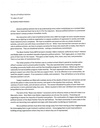
|
2016 apr 14
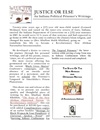
|
2014 jan 20

|
2014 jan 20
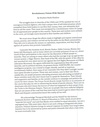
|
2014 jan 20
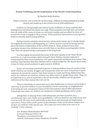
|
More... |
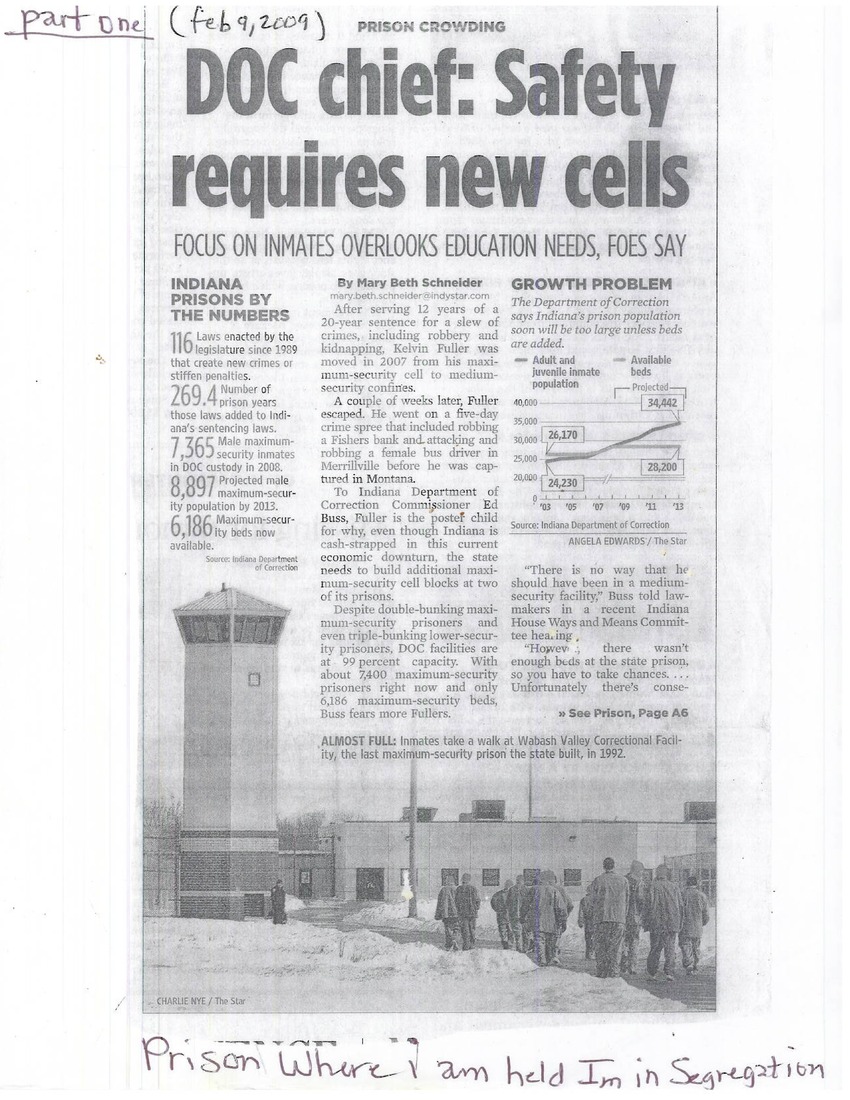
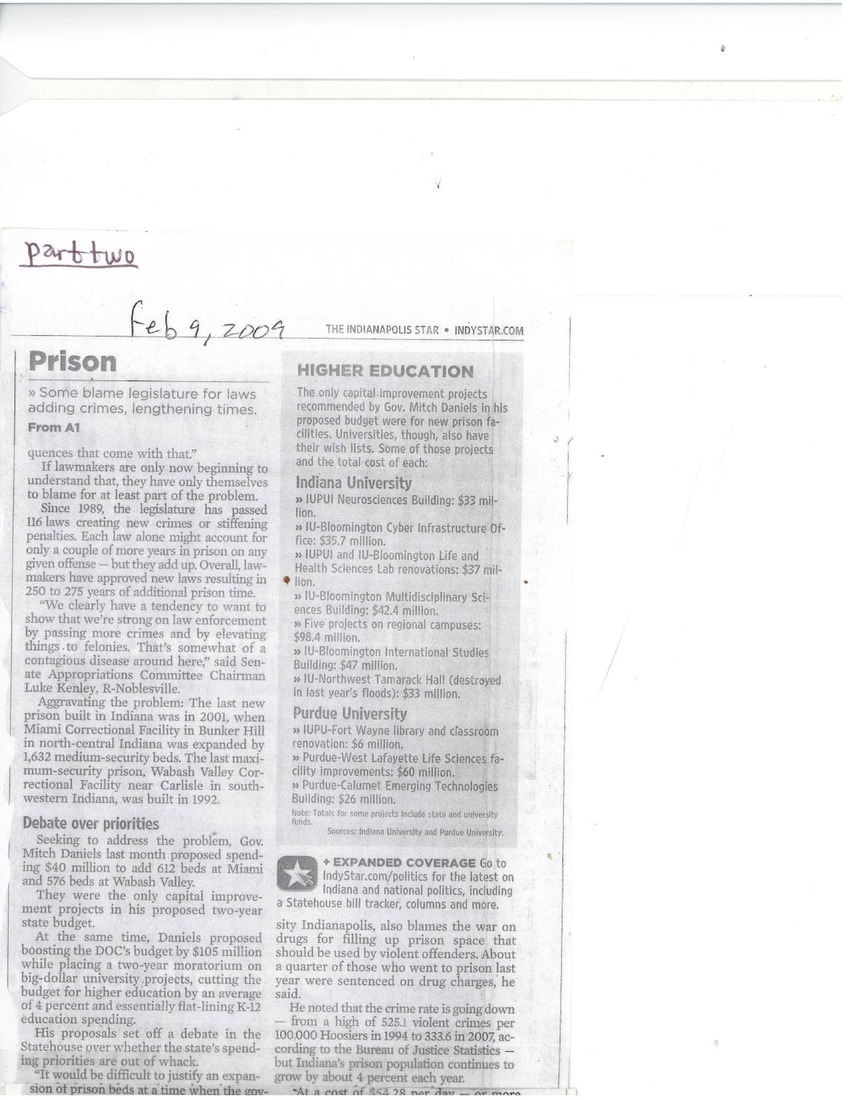
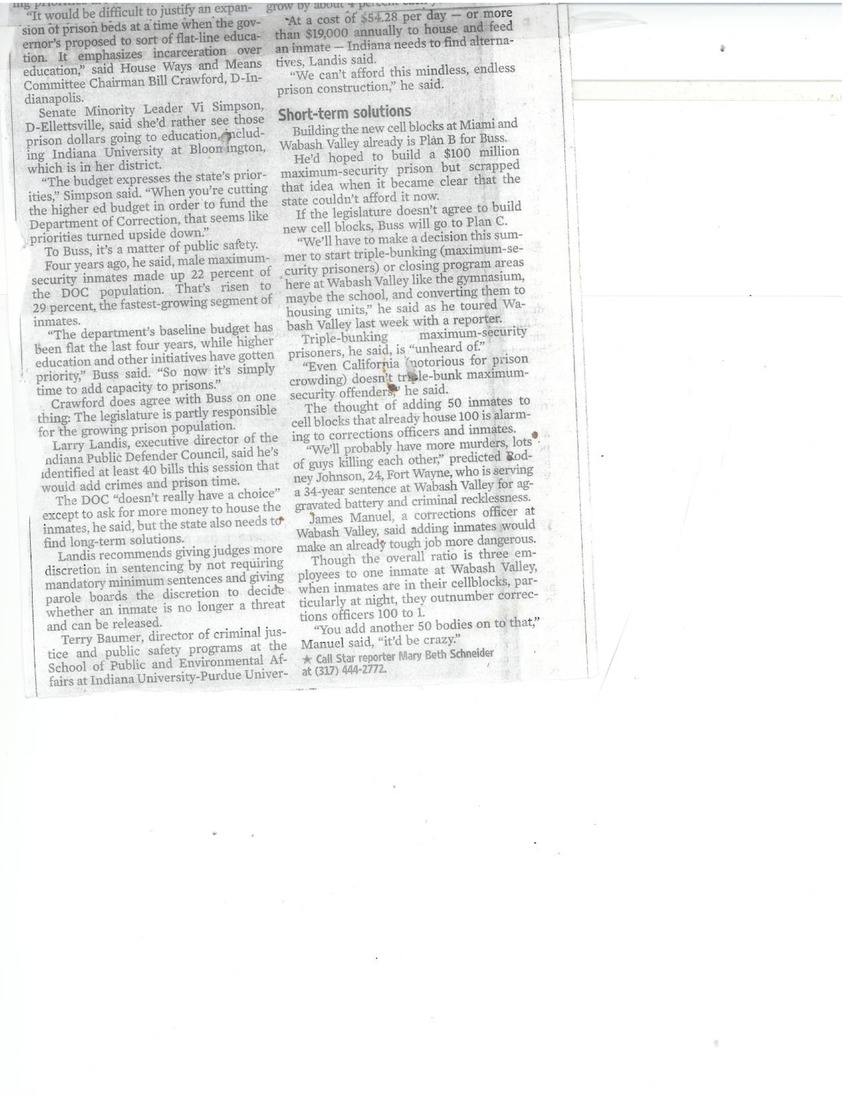
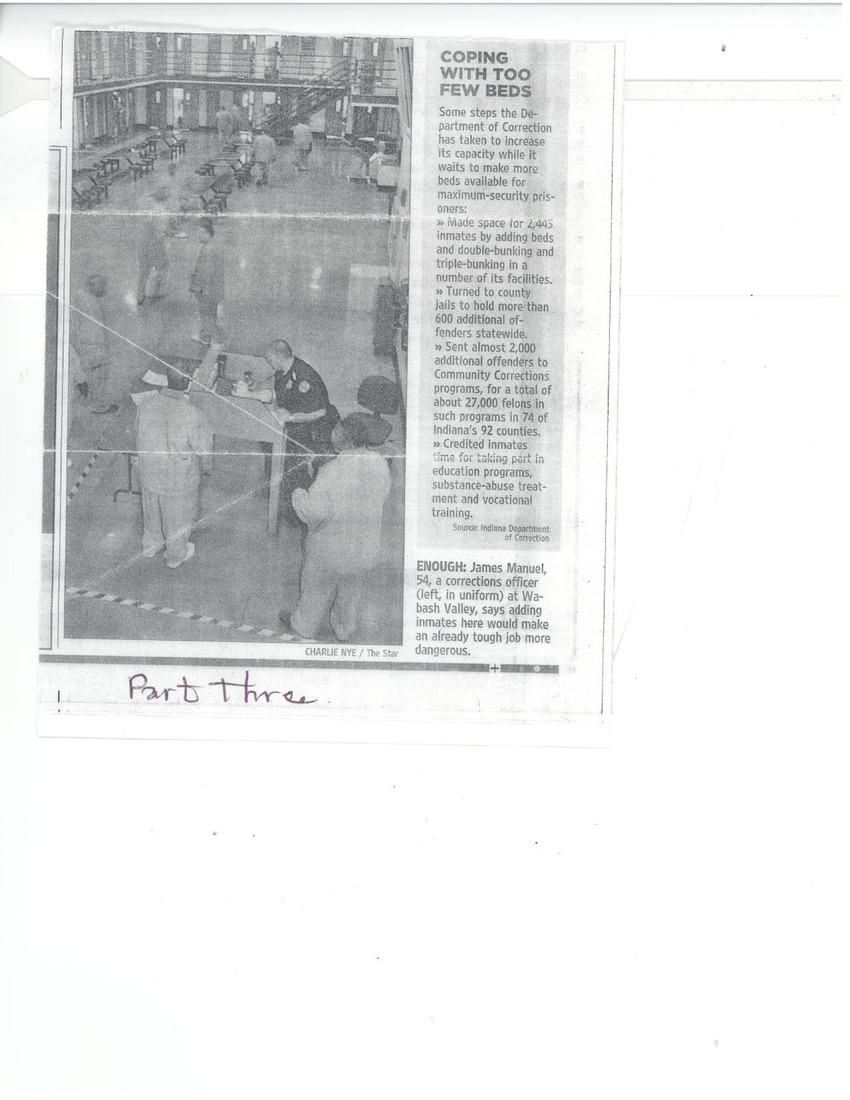

Replies